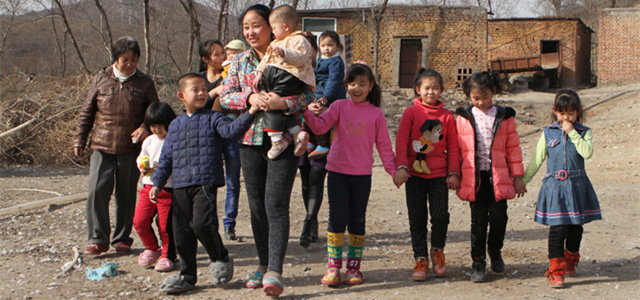January data show Chinese economy on track for steady growth
BEIJING - A string of economic indicators in January paint a rosy picture of the world's second largest economy with steady growth and reform progressing, but keeping up the good work remains no easy task.
China's economic performance in the first month of 2017 surprised the market in several ways, from expanding factory activity to recovering trade and rising corporate financing demand.
The country's manufacturing sector expanded for six consecutive months up to January, indicating factory optimism on future demand.
Echoing the positive figures, China's foreign trade continued its recovery in January thanks to an improving global economy, with both imports and exports posting double-digit year-on-year rises and total trade volume surging 19.6 percent compared with January 2016.
In addition to improved foreign demand, domestic demand is also rising, with producer prices growing faster than expected while consumer inflation is rising.
The latest credit and social financing data indicate that China's reform efforts are working as less new yuan loans were approved in January for the bubble-prone property sector, compared to those issued for industrial firms.
"China's economy is growing steadily with improved quality so far this year as previous reform efforts and policies begin to take effect," said Zhao Chenxin, spokesman for the National Development and Reform Commission.
The top economic planner approved 18 large fixed asset investment projects with investment totalling 153.9 billion yuan ($22.44 billion) last month amid efforts to stabilize economic growth by boosting infrastructure investment.
It was lower than the 184 billion yuan investment approved in December but higher than the monthly average of 142 billion yuan reported for 2016.
China is capable of achieving steady GDP growth this year despite global uncertainties, according to Ding Shuang, chief Greater China economist with Standard Chartered Bank, who expects the economy to grow 6.6 percent in 2017.
However, analysts also point out that the rosy picture at the start of the year does not mean China will have an easy journey ahead for the whole year.
US policies towards China and elections in post-Brexit Europe might complicate the international environment for future Chinese trade growth.
Domestically, falling sales of real estate and cars, once major pillars of Chinese consumption, might drag on China's growth.
Official figures for property sales in January are to be released later this month, but prices are expected to fall due to tightening policies.
A survey from the Chinese Academy of Social Sciences Wednesday showed that over half of the 30 sample cities, including Suzhou and Wuhan, saw flat or falling month-on-month house prices.
The growth of auto sales in China slowed sharply to 0.2 percent year on year in January from a 9.5-percent rise in December 2016, affected by holidays and reduced tax discounts, according to China Association of Automobile Manufacturers data.
"The development of new economic growth engines is the major criterion to decide whether the economy is firming up, and it seems that China still has much work to do," said Zhang Junkuo, deputy director with the Development Research Center of the State Council.
To reduce restrictions on the new economy, China decided to step up the process of approving, revising and abolishing laws and regulations, and to allow local authorities to implement their own rules to test new business models in low-risk sectors, including logistics, education and tourism, according to the State Council last month.
Ding Shuang expects China's service sector will grow faster in 2017 as Chinese demand better entertainment, health care, education and travel experiences, which could contribute to about 60 percent of GDP.
New business models are growing fast in China. For example, car-sharing services are springing up in many cities after bicycle-sharing became popular across the country.
Ding pointed out that to sustain steady growth at about 6.5 percent, China would still have to combine effective policy tools.
"While China decided to take a prudent and neutral monetary stance, the government needs to take more proactive fiscal policies to help prop up growth," Ding said.






















